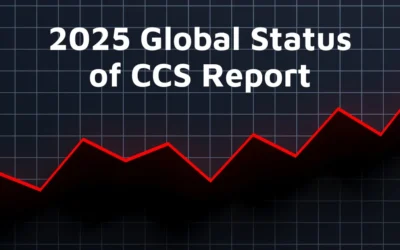Examining the Environmental Impact of Wind Turbines
As the global community continues to seek out sustainable energy sources, recent studies have uncovered critical insights into the effects of wind turbines. A notable study from Harvard has raised significant concerns about the environmental impact of wind turbines in Minnesota. According to this study, these turbines might induce more local warming than the emissions reductions they achieve. This unexpected outcome necessitates a reassessment of our renewable energy strategies, highlighting the need for alternative solutions that do not carry such drawbacks.
The Problems with Wind Turbines
Wind turbines interact with the environment in complex ways. By mixing different air layers, they pull warmer air from aloft down to the surface, which can increase local surface temperatures. The Harvard study indicates that in Minnesota, this warming effect could counteract the benefits achieved by reducing greenhouse gas emissions. This revelation is crucial for policymakers and environmentalists alike, emphasizing that while wind energy is renewable, it is not without its environmental costs.
Moreover, the local warming effect of wind turbines is not uniformly distributed. It can vary depending on the terrain, the density of the turbines, and other local atmospheric conditions. This variability adds another layer of complexity to assessing the overall environmental impact of wind turbines. As we transition to renewable energy sources, it is imperative to thoroughly evaluate all potential environmental consequences.
Exploring Alternatives to Wind Turbines
Given these findings, it is essential to investigate alternative methods that can reduce emissions without causing unintended side effects. This is where Dynamic Carbon Credits and its plant-based direct air capture technology, which produces plant-based biochar, come into play. These methods offer promising solutions that can complement or even replace traditional renewable energy sources like wind turbines.
Introducing Dynamic Carbon Credits
Dynamic Carbon Credits represent a cutting-edge approach to carbon sequestration. Unlike traditional methods, our system focuses on creating carbon credits through sustainable practices that have a minimal environmental footprint. This approach not only reduces carbon emissions but also provides a viable path to achieving long-term sustainability goals.
Capturing Carbon with Plants
Dynamic Carbon Credits employs proprietary plant technology to capture carbon from the air efficiently. This advanced method involves using specially selected and engineered plants that are exceptionally effective at absorbing CO2. These plants are cultivated and harvested, and the biomass is then processed into biochar through a process known as pyrolysis.
The process implemented by Dynamic Carbon Credit also provides additional benefits. Farming is labor intensive and provides good jobs. The soil benefits from the long roots of their crop and the carbon sequestered in the soil benefits future crops. When harvested, the crop is converted to biochar and the soil is further amended. To learn more about the tax benefits of additionality, click here.
The Benefits of Plant-Based Biochar
Biochar is a form of charcoal that is produced by heating organic material in the absence of oxygen. This process locks the carbon in a stable form, preventing it from re-entering the atmosphere and enriching the soil. This innovative approach ensures that carbon sequestration is both sustainable and scalable, offering a robust solution to mitigate climate change.
Furthermore, biochar production has several ancillary benefits. When applied to soil, biochar improves soil health and fertility by enhancing its ability to retain water and nutrients. This not only boosts agricultural productivity but also supports healthier ecosystems. By implementing biochar production close to emission sources, we can reduce atmospheric carbon levels without the local warming effects associated with wind turbines.
Dynamic takes the biochar a step further by amending the biochar with a nutrient-rich tea. This step provides additional benefits to soil nutrition.
The Role of Biochar in Sustainable Agriculture
Biochar’s ability to improve soil health makes it an invaluable tool for sustainable agriculture. By enhancing soil structure and nutrient retention, biochar can increase crop yields and reduce the need for chemical fertilizers. This contributes to a more sustainable and resilient agricultural system, which is crucial for feeding a growing global population.
In addition to its agricultural benefits, biochar also helps to reduce soil erosion and runoff, which are major environmental issues in many parts of the world. By stabilizing the soil, biochar can prevent the loss of valuable topsoil and reduce the pollution of waterways. This makes biochar an important component of integrated land management strategies aimed at promoting environmental sustainability.
Biochar vs. Wind Turbines: A Comparative Analysis
- Local Impact: Unlike wind turbines, biochar does not cause local warming. Instead, it offers added benefits to soil quality, which can have far-reaching positive effects on local ecosystems and agriculture.
- Carbon Sequestration: Biochar sequesters carbon efficiently, making it a reliable method for long-term carbon storage. The stable form of carbon in biochar ensures that it remains locked away for centuries, if not millennia.
- Sustainability: Plant-based biochar is produced from renewable resources, ensuring a sustainable cycle of carbon capture and utilization. The use of organic waste materials in biochar production also helps to reduce landfill waste and promotes a circular economy.
- Economic Viability: Biochar production can create new economic opportunities in rural areas. By providing a market for agricultural residues and other organic waste materials, biochar production can generate additional income for farmers and contribute to rural development.
- Versatility: Biochar can be used in a wide range of applications beyond agriculture. It has potential uses in water filtration, construction materials, and even as a feed additive for livestock. This versatility makes biochar a valuable tool in the fight against climate change.
The Future of Carbon Sequestration
As we look to the future, it is clear that innovative solutions like Dynamic Carbon Credits and plant-based biochar will play a crucial role in our efforts to combat climate change. By investing in these technologies and supporting their development, we can create a more sustainable and resilient global economy.
Policy Implications and Support
To realize the full potential of biochar and other advanced carbon sequestration methods, supportive policies and incentives are needed. Governments can play a key role by providing funding for research and development, creating favorable regulatory environments, and offering financial incentives for businesses and individuals who adopt these technologies.
Public awareness and education are also important. By raising awareness about the benefits of biochar and other sustainable practices, we can encourage more widespread adoption and foster a culture of sustainability. Educational programs and outreach efforts can help to inform the public and policymakers about the importance of these technologies and how they can be integrated into existing systems.
Conclusion
The Harvard study on wind turbines underscores the importance of considering all environmental impacts of renewable energy sources. Dynamic Carbon Credits and biochar production present viable and effective alternatives, offering significant benefits without the unintended warming effects. As we strive for a sustainable future, adopting solutions that are both environmentally friendly and effective in reducing atmospheric carbon levels is crucial.
By embracing innovative approaches like plant-based biochar, we can address the challenges of climate change while promoting economic development and environmental sustainability. These solutions offer a path forward that balances the need for renewable energy with the imperative to protect our planet for future generations.
Further Reading
Read the full Harvard study on the warming effects of wind turbines [here](https://www.americanexperiment.org/harvard-study-finds-wind-turbines-will-cause-more-warming-in-minnesota-than-emissions-reductions-would-avert/).
Getting Started
Learn more about how Dynamic Carbon Credits can help you achieve your sustainability goals. Subscribe to our blog for more insights on sustainable practices and innovative carbon sequestration solutions.
To take action on sequestering carbon, contact us to learn more about our process and how we can tailor a program to meet your needs.





